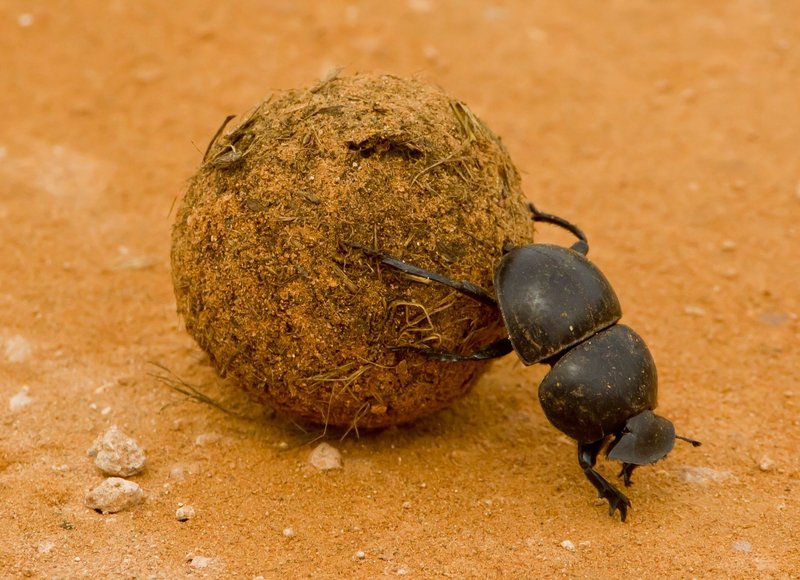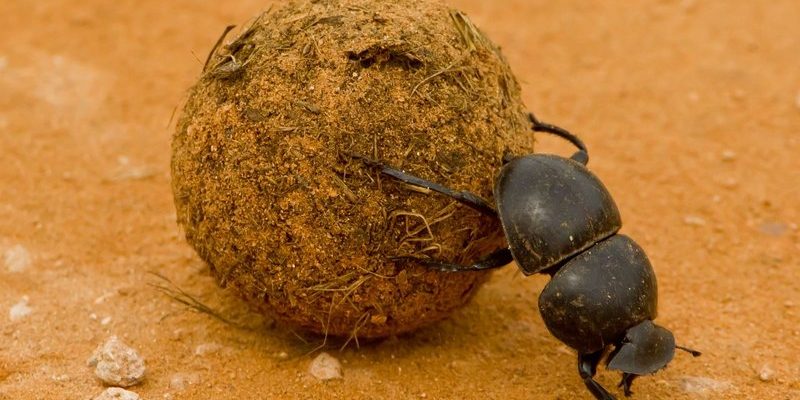
So, why should you care about dung beetles? Aside from their quirky name, they’re fascinating creatures with some incredible traits. From their strength to their lifespan, there’s more to these beetles than meets the eye. Grab your favorite beverage—maybe some coffee or a cold drink—and let’s dive into the top ten facts that make dung beetles truly remarkable!
1. The Ultimate Strength
Dung beetles are often known for their incredible strength. It’s like watching a tiny superhero in action. Did you know that some species can pull objects over 1,000 times their own weight? That’s roughly equivalent to a human pulling a double-decker bus! This super strength comes in handy when they roll dung into balls, which they use for food or breeding. Nature definitely didn’t hold back when it came to making them resilient!
The strength of a dung beetle isn’t just for show. It allows them to dig through the soil and create burrows. By doing this, they help aerate the soil and promote plant growth. So, when you see a dung beetle struggling with a ball of dung, remember, it’s doing some heavy lifting—for the environment!
2. Nature’s Cleaners
If you think about it, dung beetles are like the custodians of the animal kingdom. They do an essential job by consuming and breaking down animal waste. This not only keeps the environment clean but also helps recycle nutrients back into the soil. It’s a win-win situation!
When dung beetles eat feces, they are actually getting rid of waste that would otherwise pile up and harm the environment. They break down the dung, which helps to make nutrients available to plants. Plus, they reduce the spread of parasites and diseases that can thrive in animal waste. So, the next time you hear about dung beetles, know that they’re working hard behind the scenes to keep ecosystems healthy.
3. Fascinating Reproductive Habits
Dung beetles have some unique mating rituals that are both interesting and a little quirky. Many species engage in something called “dung ball rolling.” The male beetle rolls a dung ball to a chosen spot, and then he sometimes tries to impress a female beetle with his rolling skills. It’s like a natural dating game!
After mating, the female lays her eggs inside the dung ball. The larvae then have a ready-made meal as they develop. This not only ensures their survival but also provides a nutritious start to life. It’s the perfect example of “food and shelter” all rolled into one!
4. Incredible Navigation Skills
You might be wondering how these little beetles manage to find their way in the wild, especially when they’re focused on rolling dung. Well, dung beetles use the stars to navigate, much like ancient sailors did. By following the Milky Way, they can move in a straight line, which is pretty impressive given how small they are!
Some researchers believe that they can even detect the moon’s light. This ability helps them avoid obstacles and other predators. So, next time you see a dung beetle, remember that it’s not just rolling dung; it’s also on a cosmic journey!
5. A Diverse Family
Dung beetles are part of a large group of insects known as Scarabaeidae, which includes over 5,000 different species worldwide. This diversity means that they can be found in various habitats, from deserts to forests, all over the globe. Each species has its own unique habits and preferences for what type of dung they prefer.
Interestingly, some species even specialize in dung from specific animals. For example, certain dung beetles might prefer the droppings of elephants, while others might favor those from smaller mammals. This specialization helps maintain a balanced ecosystem, as different beetles contribute to nutrient recycling in their unique ways.
6. Short Life, Big Impact
While dung beetles have a relatively short lifespan—around one to three years depending on the species—they certainly make the most of their time. In just a few years, a single dung beetle can recycle a significant amount of waste, which further illustrates their importance in nature.
Their life cycle includes several stages, from egg to larva to adult. During these stages, they continually contribute to nutrient cycling. Even within their short lives, they play a pivotal role in keeping ecosystems healthy and functioning.
7. Dung Beetles and Climate Change
Believe it or not, dung beetles may play a role in combating climate change! By breaking down dung, they help sequester carbon in the soil. This means that they can indirectly help reduce greenhouse gas emissions. By burying dung in the ground, they prevent the release of methane, a potent greenhouse gas produced when dung decomposes on the surface.
This is a great example of how even the smallest creatures can contribute to a larger cause. Protecting dung beetles and their habitats could be a crucial part of efforts to mitigate climate change.
8. Cultural Significance
Dung beetles have held cultural significance in various societies throughout history. In ancient Egypt, they were revered and even considered sacred. The scarab beetle, in particular, was seen as a symbol of rebirth and regeneration. Egyptians believed the beetle rolled the sun across the sky, making it a powerful symbol of creation.
Today, dung beetles continue to inspire art and literature. Their unique lifestyle and essential role in the ecosystem make them subjects of fascination, reminding us that every creature, no matter how small, has its place in the world.
9. Threats to Dung Beetles
Despite their importance, dung beetles face various threats, particularly from habitat destruction and pollution. Urbanization and farming practices can eliminate their natural habitats. Additionally, the use of chemical fertilizers can reduce the availability of dung, which these beetles rely on for food.
Conservation efforts are crucial to protecting dung beetles and their ecosystems. Simple actions like reducing pesticide use and promoting organic farming can make a significant difference.
10. Fun Facts That’ll Make You Love Dung Beetles
Let’s wrap up with some interesting tidbits about dung beetles that might surprise you:
- Dung beetles can recognize their kin, which helps them avoid inbreeding.
- Some species can even bury dung that is up to 250 times their body weight.
- The largest dung beetle in the world, the *Goliath beetle*, can weigh over 100 grams.
- Some beetles can roll dung balls over distances of up to a mile!
These facts shine a light on the remarkable qualities that make dung beetles so special.
In conclusion, dung beetles may not have the glitz and glamour of some animals, but they’re essential players in our environment. From their impressive strength to their fascinating behaviors, they deserve a little more love and respect. Next time you see one, take a moment to appreciate this tiny hero rolling its way through the world, keeping it clean and healthy!

